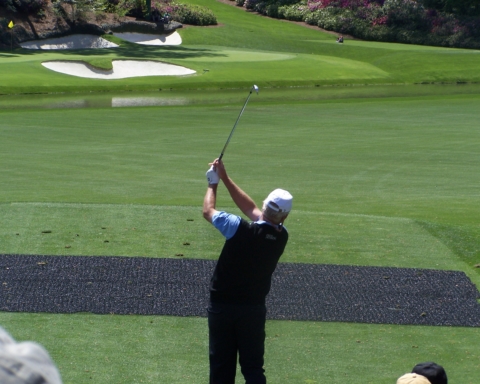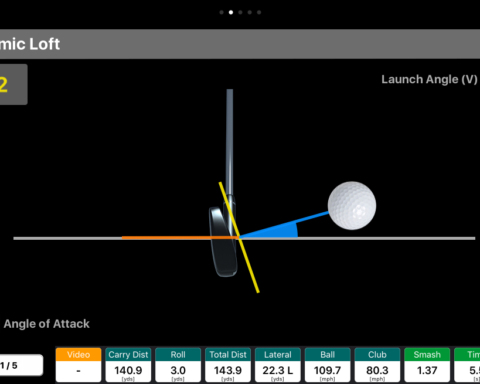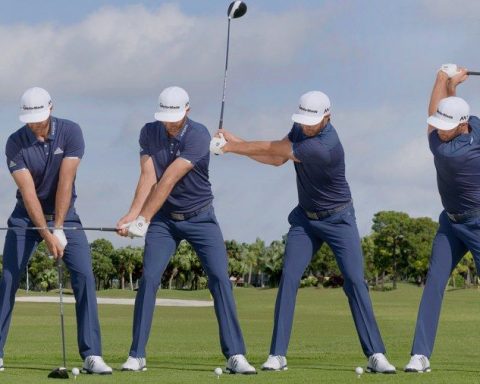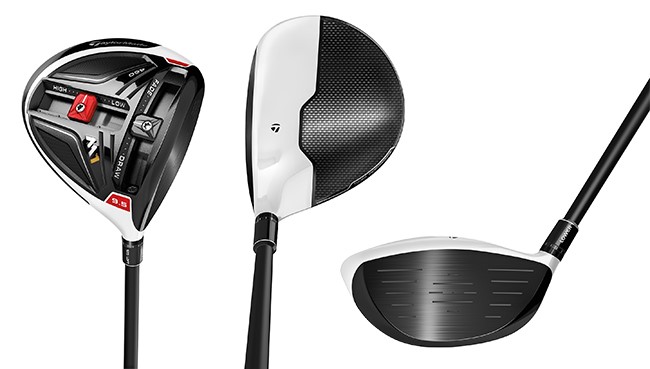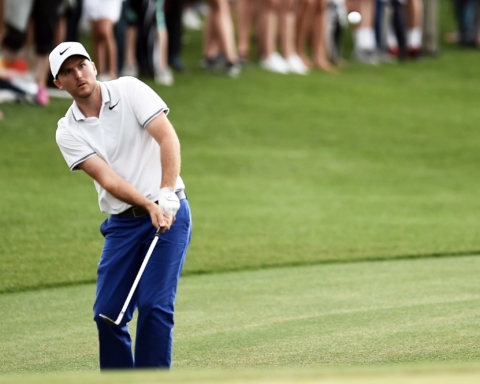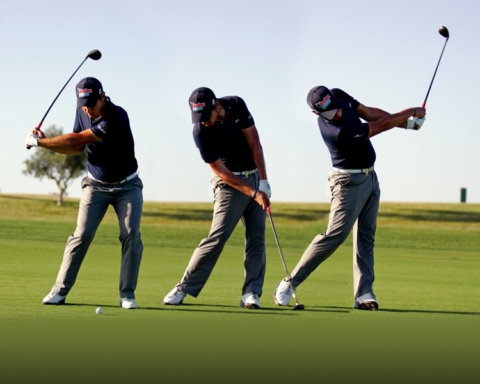Timing and Tempo, it does affect your game!
We often hear watching golf on TV about how import a players tempo is during a stressful time on the weekend. We often hear coming down the stretch that a players timing or tempo is just a little off. Often when PGA tour players get under a little pressure their tempo and or time it takes to set up for a shot changes. I took the time to measure how much time it takes the best players in the world for their pre shot routine for each shot. Each player studied had a consistent time it took from the takeaway to impact with all shots during not stressful shots. We see this change often when players get under pressure.
Tempo is often discussed about the magic elixir for good playing under pressure. Many of us have a tendency to swing a little faster when we get nervous. The less confidence we have in our swing the more common it is to change our “tempo.” One thing learned in the study was that players with better swing mechanics changed their timing and tempo less under pressure. This also applies to all of us non tour players.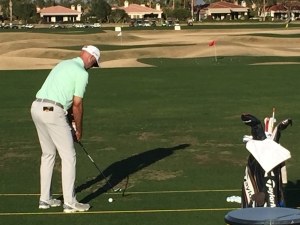
We often have a great game of golf and think we really were swinging the club great. Odds are we were making the same, not so great golf swing with better tempo. Better tempo meaning no rushing and no “jumping” at the ball. You don’t have to believe me but let me give you an example from a group I often play with. I often play on Saturdays with a group of guys with the majority of handicaps at or above 15. We rotate who plays with who so I get to see a large sampling of swings.
One player we will call Jay, because his name is Jay. Jay takes a very large shoulder turn, over rotates his hips on the back swing and gets a majority of his weight on the outside of his right foot on the back swing. He is not in a good balanced position at the top of his swing. To start the down swing producing good impact Jay needs to make a few corrections before he gets to the ball. He must make a very slow transition to get his weight back to the inside of his right foot so he can apply lateral motion towards the target. He must turn his hips towards the target and on and on with good tempo. The point is if Jay’s tempo gets even a little fast he will hit a lot of bad shots. On the weeks where his tempo is great, he plays very well. This is a very typical scenario for most amateur players.
Part of the reason we work so hard on getting a good golf swing is to have it work under pressure. To work best under pressure we want a swing that does not require a bunch of fixes on the downs swing. We are better off if we don’t have to rely on perfect tempo.
The back swings purpose is to put the club and our body in a good position from which to strike the ball with speed and consistency in and athletic motion. 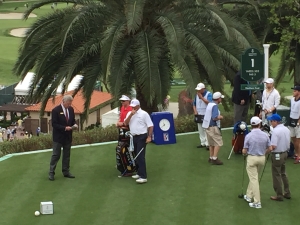
With this in mind next time you practice keep in mind that every complicated move you make on the back swing will require great tempo on the down swing. This doesn’t include how much better timing you need in a non flat lie, which is almost every shot in golf not hit on a range.
Timing is not just an imaginary image. I spent a few years measuring players on tour and their timing a learned a few things. There are a few different areas of timing and tempo that might help you understand their and your swing. These stats are from players a few years back, the players names may have changed but the timing has not.
How fast should you swing?
Many players talk about swinging slower and easy. The truth is we want to swing as fast as we can in balance and in an athletic motion that is repeatable, see http://blog.trackmangolf.com/trackman-average-tour-stats/
Good players look like they swing slower because they swing more efficiently. Fred Couples looks like he has a very slow swing but in fact it is 1/10 of a second slower than the average tour player. Everyone has a natural speed at which their full swing, pitching, chipping and putting should operate. If you want to swing like a tour player your full swing from the start of the the back swing to impact should be on average just over one second. Your pitching will be about 1/10 of a second slower and your putting will take about one second.
Pre-Shot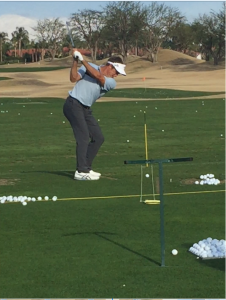
One of the easy things to measure is how long it takes for a player to stand behind the ball, visualize the shot, set up and then hit the ball. What was surprising was that a majority of players spent between 10-12 seconds once they started moving towards the ball until impact. If you watch Jason Day he spends a ton of time visualizing the shot before he moves towards the ball.
The theory is there is three parts to each shot, (scientist, set up guy and athlete.) The scientist does all of his analysis away from the ball and never within 3 feet of the ball. He then hands off to the set up guy to make sure alignment, aim, posture is all done properly. Once that process is completed then the athlete is supposed to take over. The athlete is not very smart and will always try to adjust what the scientist and set up guys have done if you give him enough time. The key is, don’t spend to much time over the ball thinking. Once you are over the ball do, do not think.
The best players have this process down and rarely deviate from there timing. Under pressure or in major tournaments you will players that “choke” change their pre-shot time considerably. You can talk about the bad shots in major golf history but normally if you time the pre-shot routine you will see a time difference which represents the players doubt and their athlete thinking too much.
Full Swing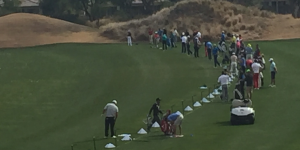
The full swing takes an average of approximately a little over one second from the start of the takeaway to impact with tour players. The average I measured was 1.0977 for the full swing. This was the same for a wood or iron shot. There are guys like Kenny Perry who has a very slow swing, 1.445 seconds to a fast swinger like Tom Lehman .82 second. Fred Couples slow looking swing was measured at 1.18, Furyk at 1.165, Ernie Els 1.148 and Tiger at 1.1 seconds. It may seem a little surprising to see the data and realize that Tigers swing actually take less time than Ernie.
Tiger’s problem with Temp
Chipping
Chipping speeds are very close to putting speeds. The average chipping motion was .92 seconds. Tiger was measured at .98 and Furyk at .88. The average tour player was approximately 25-30% faster on the chipping motion than on the full swing. This may in large part be due to little to no weight shift and very little hinging of the right arm of wrist.
Pitching
Pitching measure about the same as the full swing with many player taking the same to 15% less time to complete the motion.
Putting
This is where is get interesting. No only is the total time interesting but the fact that the length of the putt had no effect on the total time. That is correct, the time it takes for the putter to leave the ball and return to the ball on a 3 foot putt or 40 foo putt is the same with tour players. It may not be with amateurs but with great putters this stays as a constant. With this knowledge that the time stays the same than the tempo of the putt must change. The longer the putt the longer the putting stroke so the speed of the stroke must increase so the total time can stay the same. Sounds complicated but if you go to the putting green with a metronome this is pretty natural or should be.
The tour times measured were fairly consistent. The average tour guy would set the metronome between 55 and 71 beats per second. There times are the following;
Steve Stricker .89
Brad Faxon .91
Tiger Woods .76
Kenny Perry 1.17
Find your putting stroke speed to improve. In field tests is was very common that the persons natural heart rate was similar to their putting stroke speed. People with slow heart beats that talk and walk slow typically have slower putting and golf swing times.
I know this data is a little shocking, at least is was for me. Next time before you go to the practice range or green download a free metronome app on your phone. Play around with the metronome until you feel comfortable starting the club away on a beep and making contact on the next beep. Practice this for a while and you may be surprised how much you improve.
Jim Hartnett, PGA
www.myhome4golf.com


